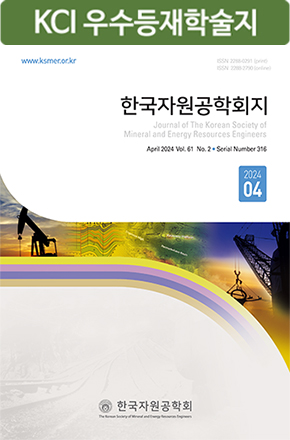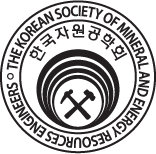Research Paper
- Publisher :The Korean Society of Mineral and Energy Resources Engineers
- Publisher(Ko) :한국자원공학회
- Journal Title :Journal of the Korean Society of Mineral and Energy Resources Engineers
- Journal Title(Ko) :한국자원공학회지
- Volume : 56
- No :1
- Pages :1-9
- Received Date : 2019-01-06
- Revised Date : 2019-02-13
- Accepted Date : 2019-02-22
- DOI :https://doi.org/10.32390/ksmer.2019.56.1.001



 Journal of the Korean Society of Mineral and Energy Resources Engineers
Journal of the Korean Society of Mineral and Energy Resources Engineers








